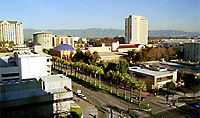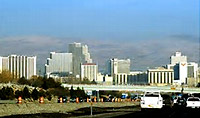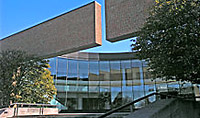For the sixth year, Area Development has tackled the question with a multifaceted approach that crunches a wide variety of data to arrive at rankings in four vital factors — Prime Workforce, Economic Strength, Year-Over-Year Growth, and Five-Year Growth. They’re indicators that collectively demonstrate a metropolitan area’s recent and longer-term economic vitality and success, as well as its capacity to effectively support the growth and prosperity of businesses that choose to locate or expand there. The factors that go into Area Development’s Leading Locations studies are, thus, both an examination of the past and a glimpse into the potential future.
This year, 394 metropolitan statistical areas (MSAs) are included in the rankings. It’s worth noting that growth really matters in the calculations for Leading Locations. Careful longtime followers may observe that certain high-ranking locations from last year are nowhere near as high on the list this year. That is not necessarily a sign of economic disaster in those cities that have slipped in the rankings — they may, in fact, still enjoy an enviable economic position, but their growth trajectory has cooled a bit since the last tally.
Leading Locations for 2016 Results
Big Cities (Population >600,000)
San Francisco-Redwood City-South San Francisco (Population: 1,523,686)
The San Francisco side of the Bay Area is at or near the top of nearly all of the charts that make up the Leading Locations calculations, so it’s not a wonder that it’s the overall #1 city, as well as tops among the nation’s largest cities.
Among cities of all sizes, it’s first in the Prime Workforce ranking, fifth in Economic Strength, seventh in Five-Year Growth and eighth in Year-Over-Year Growth. Among its big-city peers, the San Francisco area tops the Prime Workforce list, is second in both Economic Strength and Year-Over-Year Growth, and third in Five-Year Growth.
If one considers venture capital as a bellwether for future growth, it’s reasonable to expect the San Francisco area to remain highly ranked in years to come. The Bay Area was the top-ranked region in venture capital last year, according to the San Francisco Center for Economic Development (SFCED), pulling in 47 percent of the national dollar total and 30 percent of all deals. The total invested was up over the year before despite the fact that global economic uncertainty pulled down investments in general in the fourth quarter.
That flood of venture capital points to the fact that the area lives up to its reputation as a technology-centered economy. Historically a financial center and magnet for tourism, the economy these days gets a lot of its strength from the tech sector, biotech, and medical research. The hot economy is creating an abundance of jobs, as reflected in the low unemployment rate — as of March 2016 the Bureau of Labor Statistics pegged the jobless rate at 3.8 percent in the San Francisco-Oakland-Hayward area.
All in all, the area has performed incredibly well in recent rankings, topping Mercer’s 2016 Quality of Living Survey, while coming in second only to the San Jose area in the Milken Institute “Best-Performing Cities” economic vitality report. Its strength in Prime Workforce is reflected in its #3 ranking in the Robert Half Career City Index, according to the SFCED.
Grand Rapids-Wyoming, Michigan (Population: 988,938)
The Grand Rapids metropolitan area was highest among large cities in Economic Strength and Five-Year Growth. It also was a top-10 finisher on the big-city rankings of Year-Over-Year Growth, in the sixth spot, and Prime Workforce, placing eighth. Grand Rapids enjoys a diverse economy that is a job-creating engine — unemployment as of March 2016 was 3.4 percent, and job growth over the past five years is averaging more than 4.5 percent. The area has a long history in manufacturing, with a strong presence in furniture, automotive, and aviation. Manufacturing is, indeed, a cornerstone of the economy, creating 19 percent of the jobs in western Michigan.
The area is increasingly strong in the high-tech sectors in particular, from advanced manufacturing and the life sciences to information technology. Its biopharmaceuticals sector ranks in the nation’s top 10, and the food and agriculture sector adds nearly $100 billion to the local economy.
Grand Rapids and the surrounding area regularly ranks near the top of a variety of surveys of business and quality-of-life factors. Last year, Forbes placed it #1 on its list of “Best Cities for Raising A Family,” and second on the list of “Best Cities for Finding A Job.” It’s among the top U.S. “emerging cities” for global trade, and is home to more than 130 international companies.
San Jose-Sunnyvale-Santa Clara (Population: 1,836,911)
The San Jose-Sunnyvale-Santa Clara metropolitan area has a high reputation to uphold, given its nickname of “Silicon Valley,” and its place on the Leading Locations listing suggests that it’s doing just fine. It tops the list for Year-Over-Year Growth among large cities, ranks third in Economic Strength, and is seventh in Prime Workforce and ninth in Five-Year Growth. The roster of technology companies operating in and around the region is a true Who’s Who, led by Cisco Systems along with such names as eBay, IBM, Adobe Systems, and in nearby Cupertino, Apple, to name-drop a few. Just within San Jose, some 25,000 people earn a living in the computer and communications hardware sector, another 16,000 in software, and nearly 12,000 in semiconductors. More than 800 high-tech companies have a San Jose address.
Relatively few are without work in the San Jose area, according to the Bureau of Labor Statistics. The metro area recorded a jobless rate of 3.9 percent in March 2016. That fact, along with the prevalence of high-paying tech jobs, has helped San Jose regularly tally the highest median income among the nation’s larger cities, along with the highest disposable income.
Mid-Size Cities (Population 160,000–600,000)
Reno, Nevada (Population: 425,417)
Healthy Year-Over-Year Growth helped put Reno atop the list of mid-size cities — it’s second among mid-size cities and third among all cities in that category. Unlike larger cities, mid-size cities really share the wealth when it comes to the rankings used to determine Leading Locations, and there aren’t any cities that dominate all of the factors. Reno is 11th among mid-size cities in Five-Year Growth and Prime Workforce, and sixth in Economic Strength. Unemployment is higher than in some places but still reasonably healthy, coming in at 5.5 percent in March 2016, according to the Bureau of Labor Statistics.
With its location in Nevada not all that far from Lake Tahoe, it’s not surprising that Reno’s economy has historically had strong ties to gaming, entertainment, and tourism. But the city has placed its bets on a more diverse future, and it has been a good bet. Data centers have been a big part of that diversification, with Switch spending nearly $2 billion and others including eBay announcing data center plans.
Entrepreneurism is also one of the hottest games in town, with startups and other technology, clean energy, and healthcare businesses driving healthy growth. The geothermal business is energetic, and other advanced manufacturing sectors are on the rise as well.
Reno also has distinct transportation advantages that have helped it attract distribution-related businesses eager for a location that can hit 80 percent of the 11 western states in a day or less. Among the most recent announcements are a distribution center for e-commerce retailer Jet.com and one for wholesaler Quality Bicycle Products.
Fort Collins, Colorado (Population: 299,630)
Colorado boasts a number of mid-size contenders, led by Fort Collins, with its Economic Strength ranking of 15th among mid-size cities, a fifth-place Prime Workforce ranking, and Five-Year Growth placed at 10th. The hot economy has driven the jobless rate down to 3.1 percent as of March 2016.
The presence of Colorado State University has been a draw for high-tech industries, led by Hewlett Packard and including a variety of other prominent tech names. Manufacturing has been an economic mainstay, with products ranging from control systems to wireless phone protective gear to dental devices to beer. Just one of many positive headlines in recent months was the planned expansion of semiconductor designer Avago Industries, with more than 1,300 on the payroll locally. Local economic development officials strive to keep the good news rolling by funding targeted industry clusters. Among the more recent recipients are groups representing biosciences and food-related industries. Outside observers have taken note of the business-friendly environment, including an “A” rating for small business friendliness from Thumbtack and a Fast Company top-10 ranking for tech jobs.
Saginaw, Michigan (Population: 200,169)
Next in line is this Michigan community, ranked second in Economic Strength among mid-size cities and ninth overall in that category. Its growing economy has landed it third on the mid-size cities list of both Year-Over-Year and Five-Year Growth. Unemployment in the area was at 5.3 percent in March 2016, according to the Bureau of Labor Statistics.
Saginaw is in the heart of the automotive manufacturing belt, and its multiple advanced manufacturing players build upon these roots, led by Nexteer Automotive, headquartered in Saginaw. But the economy is diverse — Dow Chemical and Dow Corning are headquartered in the region, and Dow Corning is a majority owner in Hemlock Semiconductor, with decades of history in the area. Also strong locally are the medical technology and renewable energy sectors.
Small Cities (Population <160,000)
Napa, California (Population: 136,484)
The winemaking capital of Napa is a hotbed for economic growth — in fact, it is the small cities as well as the national leader in both Year-Over-Year and Five-Year Growth. It is second among small cities and fourth overall in Economic Strength, and also second among small cities in Prime Workforce.
What puts Napa on the map for most people is its high-end reputation for winemaking, and of the 12 percent of the local workforce involved in manufacturing, a large share are producing wine. Indeed, the list of the county’s largest employers is dominated by wineries. Services, including hospitality and healthcare, make up nearly half of the local economy. Of other sectors, the one pegged for the most growth in the next few years is the mining, logging, and construction sector, according to the California Department of Economic Development.
There are plenty of jobs to go around, according to the Bureau of Labor Statistics, which puts the jobless rate in Napa at 4.4 percent, as of March 2016.
Columbus, Indiana (Population: 76,794)
This Indiana county seat continues on its winning economic streak. Its forward-thinking and generous locally based employers not only provide thousands of high-paying jobs but also share an unusual amount of civic support that has, among other things, put Columbus on the map of cities with the highest concentration of top-notch architecture. Columbus leads small cities in Economic Strength and places third among cities of all sizes in this category, and ranks second among its peers in Five-Year Growth. Its jobless rate as of March 2016 held at 4.2 percent.
Fortune 500 diesel engine maker Cummins, which invested heavily and successfully on the promise of clean-air engines, has an outsized role in the city’s success — it employs about a sixth of the local workforce, and is the biggest reason that Columbus leads the nation in the number of mechanical engineers per thousand residents, at more than 30 (that’s triple the national average).
But it’s far from a one-company town, and has been a magnet for foreign direct investment for years. For example, Toyota Industrial Equipment, one of nearly two dozen Japanese-owned companies in the county, has been making forklifts there since 1990 and last year pledged $16 million to build a new national headquarters for its material-handling division. Others in the area include Dorel, NTN, and Enkei, and last year Japanese-owned Toyota Industrial Equipment supplier Daiei Giken Kogyo Co. announced it would build its first U.S. production site in Columbus.
Bend-Redmond, Oregon (Population: 157,733)
Bend-Redmond, the #4 small city in Economic Strength and third-best in Five-Year Growth, draws much of its success from its natural beauty and resources. Tourism is a big economic driver, thanks to the nearby ski slopes and lakes, and about a sixth of the workforce is supported by visitors. As in most communities, healthcare and social services provide lots of jobs, but many Bend-area residents make a living in wood product manufacturing, as well as recreational and transportation equipment.
Local economic development leaders are placing a strong emphasis on the growth prospects in the tech sector, both software and hardware, as well as the pharmaceuticals and medical device industries. They’re working hard to attract data centers and more makers of apparel and recreational/outdoor equipment. And they hope to build upon the area’s already strong brewing and distilling business, led by one of the nation’s largest craft brewing operations, Deschutes Brewery. The aerospace business also has a foothold here, along with semiconductors and renewable energy, among other targets of local leaders’ attention. The March 2016 unemployment rate in the Bend area was 5.1 percent, according to the Bureau of Labor Statistics.
Area Development’s research desk compiled the statistics for this report. Locations were ranked according to the methodology explained herein. This article was written by Steve Stackhouse-Kaelble, Staff Editor.






